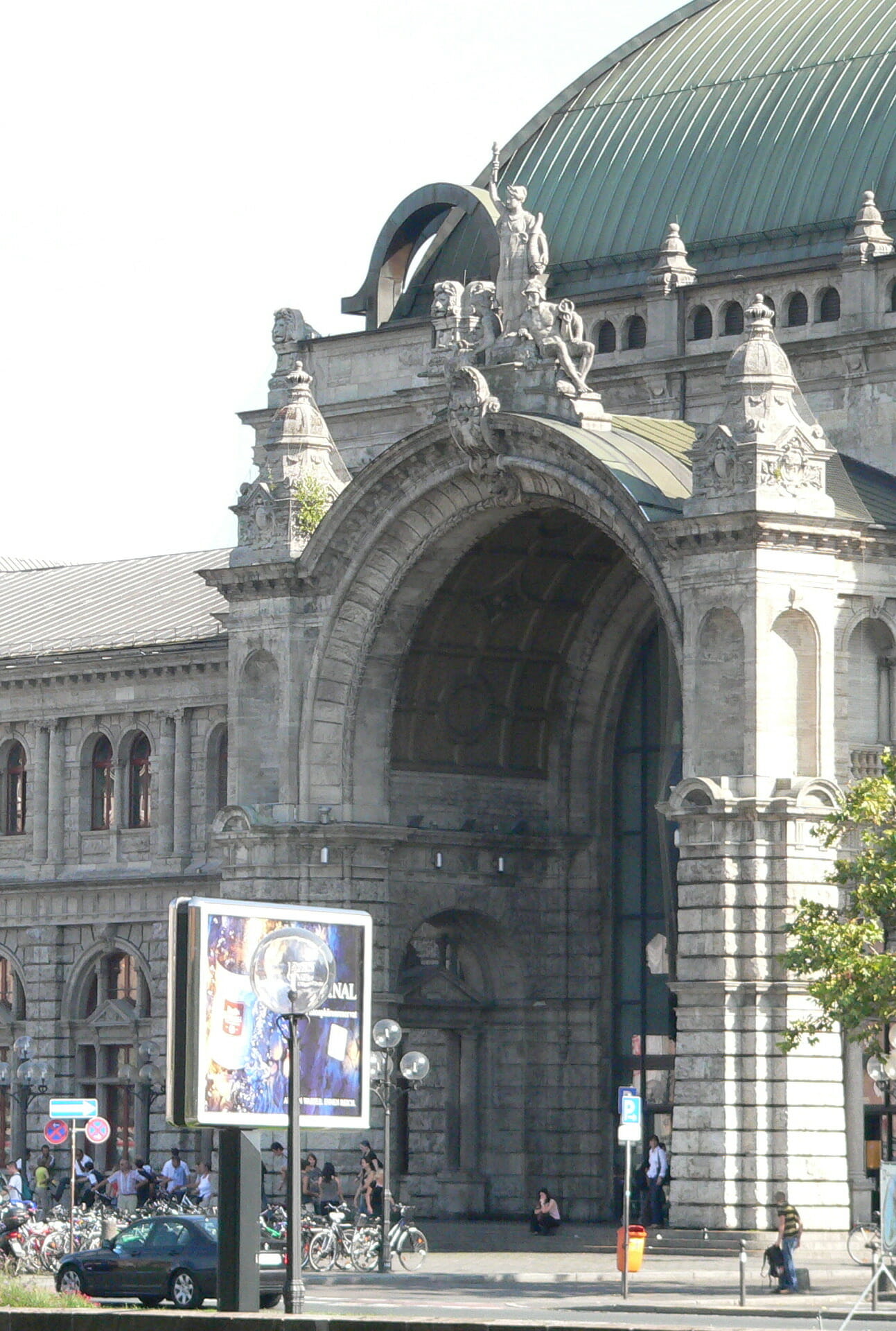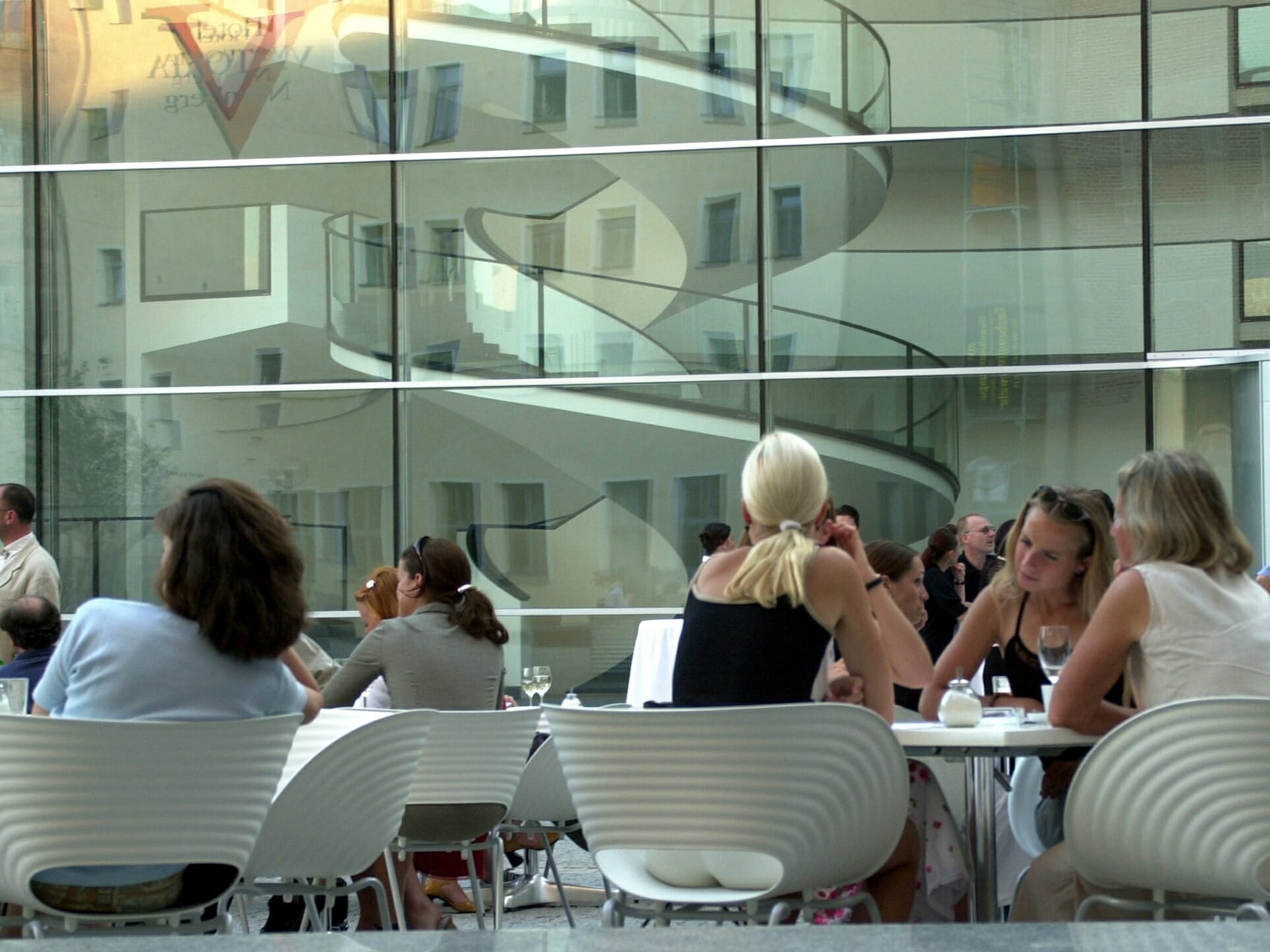NUREMBERG – TRADITION AND INNOVATION

THE BKB TRAVEL GUIDE FOR NUREMBERG
You will find more detailed information in our travel guide “3 Days in Nuremberg“: A schedule for three days, a city map, special tips and the BKB address service. We will show you the highlights, walk with you into nice quarters, have a break and tell nice stories … just as much as you need for three days!
Order the travel book “3 days in Nuremberg” as paperback or e-book right here in the BKB Shop or in your bookstore!
The travel guide “3 Days in ” is available in german or english language in the BKB Shop or in your bookstore!
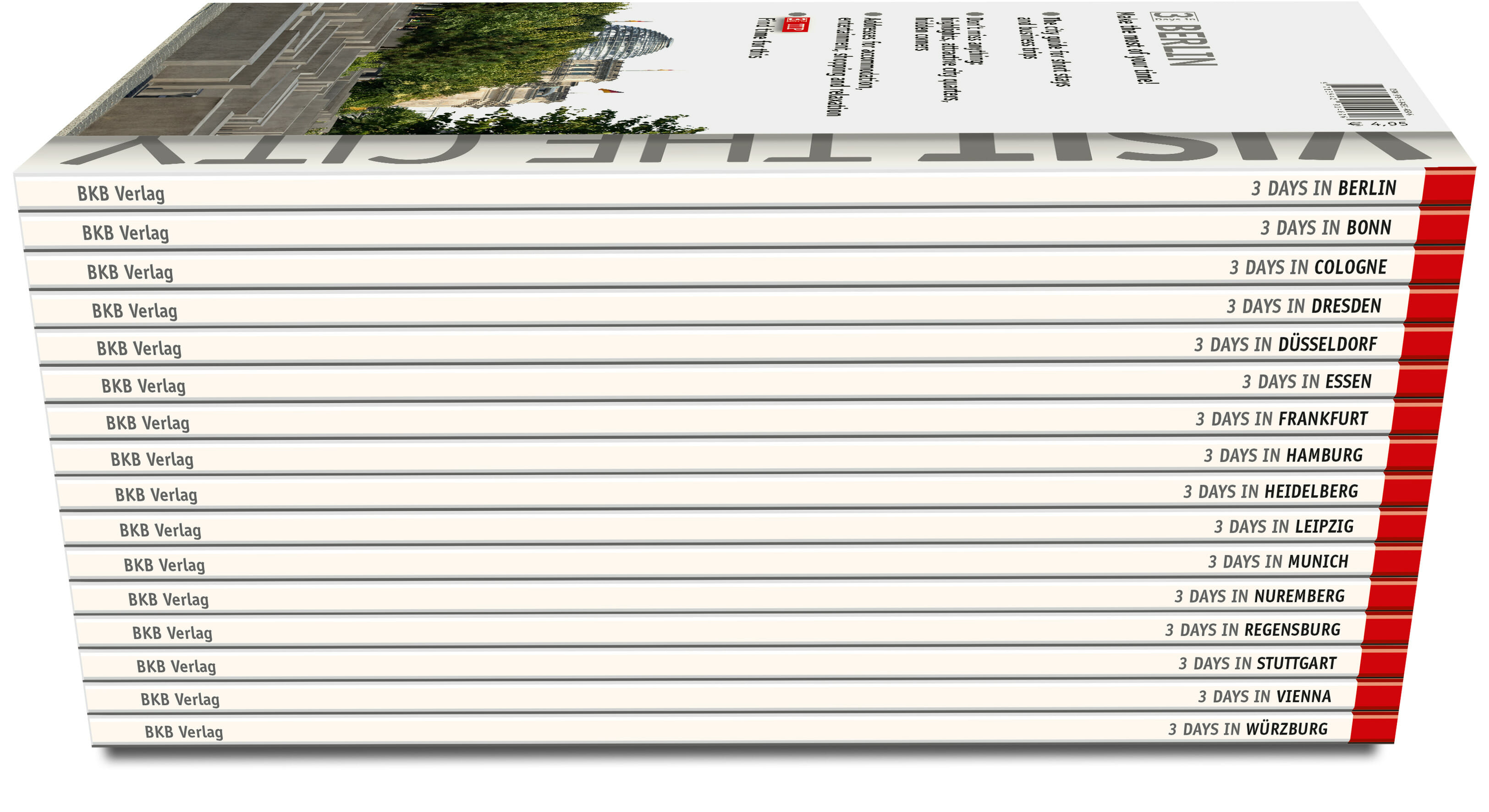
The texts and images on our website are to help you get your bearings and plan your trip to Nuremberg. All information has been carefully researched by the 3-Days-In editorial team and continually updated. Nevertheless, it is possible that individual details are incomplete or out of date. We are therefore grateful for every correction or addition to our information. Please send your hints to: info@3-tagein.de
TIPS FROM THE VISIT-THE-CITY-EDITORS FOR YOUR 3-DAYS-TRIP TO NUREMBERG
Over 950 years of history have coined the city: The emperors of the German Reich often resided here while the city was the capital and centre for trades with many foreign countries and countless inventions were brought onto their way into the world. Nuremberg is known as a location for many of Bavaria’s biggest industrial companies, as well as for being the setting of the Nuremberg Party Rally or of the Nuremburg Trials. The city’s incredible diversity of historical and artistic evidence in and outside the Altstadt (Old Town) is worth exciting expeditions wherever you walk.
NUREMBERG DAY 1
A WALK THROUGH THE CITY
A starting point for the tour through the old parts of Nuremberg is the Main Market Square, known to the world for its Christkindlesmarkt. For Nuremberg’s inhabitants, it is the heart of the city where fresh meat, vegetables and fruits, can be bought throughout the week. An eye-catcher and popular meeting point is the Schöne Brunnen (Beautiful Fountain) from the 14th Century (the original can be found in Germanisches Nationalmuseum) looming over 19 meters above the city and seemingly growing out of an octagonal basin shaped like a Gothic steeple top. Also considered a talisman in accordance with the legend, many believe a wish will come true after turning the ‘Golden Ring’.

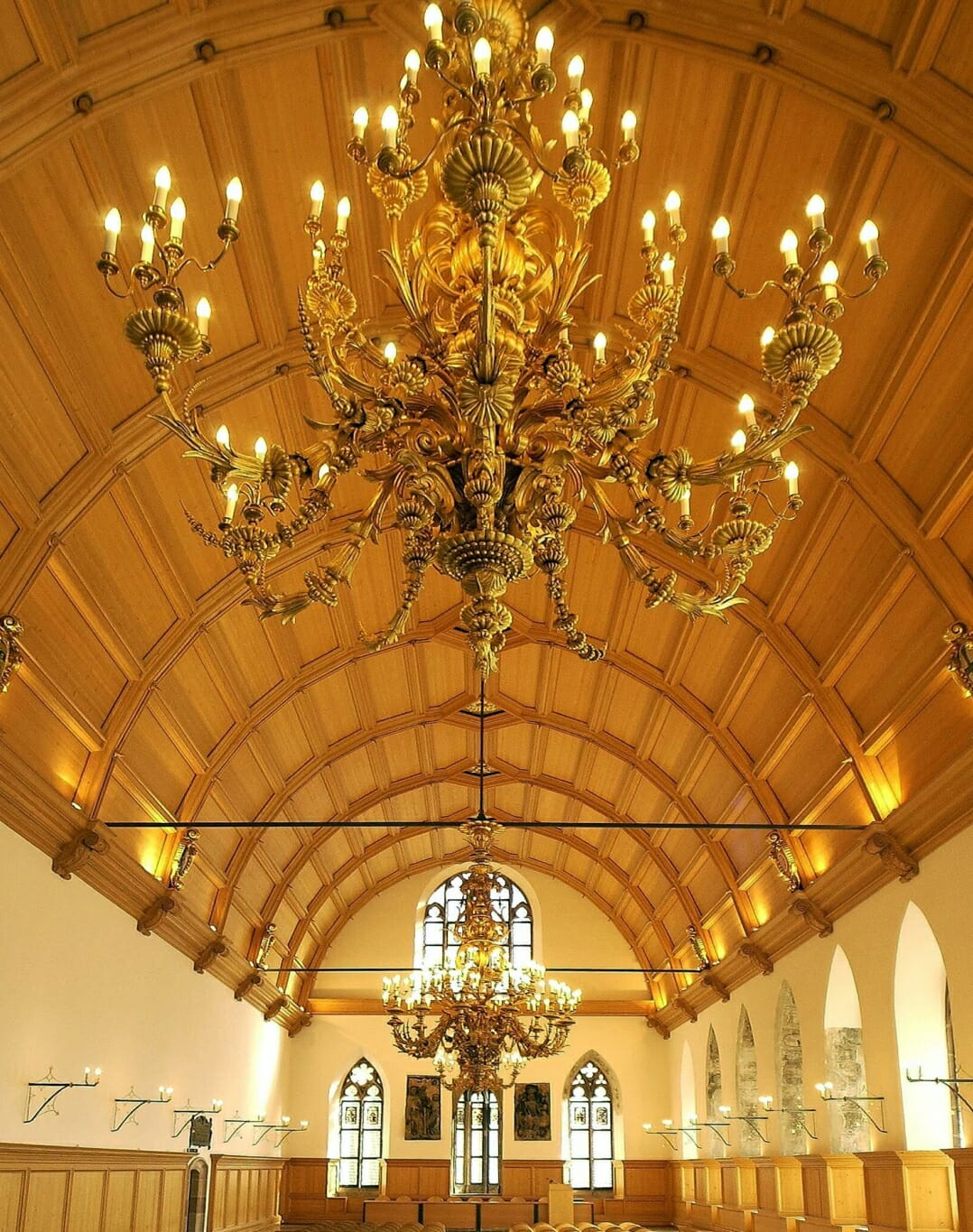
THE OLD CITY HALL
In the Medieval Age, the treasuries of the Empire were shown to the citizens of Nuremberg on the Main Market Square once a year. Nowadays, visitors can only view the replicas in the reception hall of the city hall. This splendid building in the style of Italian renaissance palaces was erected by Jacob Wolff, at the beginning of the 17th Century and encapsulates the city motif. Its three-storey western facade and the enormous Baroque portals lie across from the eastern choir loft of the St. Sebaldus Church. The so-called Wolffsche Bau (Building by Wolff) still retains a part of its Gothic ancestry (1332–1340). For example, the big salon of the city hall, with 40 meters of length, was the biggest secular hall to the north of the Alps at its time.
It gets a bit spooky when you take a guided tour through the labyrinth-like basement vaults of the city hall. Until annunciation of judg- ment, prisoners were locked up in tiny cells of only 2 cubic meters in the Medieval Age. The name ‘Lochge- faengnis’ (Whole Prison) could not be more suitable, as sticks and torture instruments give the impression of medieval techniques of interrogation.
A VISIT IN CHILDHOOD
A great idea for the kid in all of us: this world- renowned museum of wooden toys, dolls, doll houses, tin toys, as well as contemporary pieces such as Playmobile, Barbie and much more, gives you a full survey of the cultural history of toys.
The museum offers a comprehensive overview of the cultural history of the toy with great examples from many centuries. Nuremberg is not by chance location of this museum. The city has a great tradition in the playground and is also the host of the world’s largest toy-faire Spielwarenmesse.


ALBRECHT DÜRER
Get an impression of what a typical bourgeois house looked like from the inside at the end of Albrecht-Dürer-Street. Here stands the home of Albrecht Dürer in which he lived until his death in 1528. Today, the beautiful timber-framed building serves as a museum and informs visitors of the life and work of Nuremberg’s best known artist and also about the artistic tech- niques of his time. If you are lucky, you may be just in time for a guided tour with Agnes Dürer. Don’t miss it! The lady of the house tells the intimate stories of daily life in an artist’s home several times a week. Don’t worry though: if you miss the guided tour, there’s always the audio version to rent.
THE 1000-YEAR LANDMARK
You will explore a castle that has seen many parliaments of German emperors in the Middle Ages, a place where indeed German History was written.
Maybe it is the boxes with gingerbread depict- ing the building in which all emperors of the Holy Roman Empire at times resided for over more than half a millennium (1050-1571) that made this castle world famous. Hosting numerous parliaments, the castle made Nuremberg the political centre of the Empire in the Middle Ages. Today you can see the remains of three sites: coming from the Old Town you enter the best kept section, the actual Kaiserburg (Imperial Castle), erected in the 11th Century and developed by Emperor Friedrich Barbarossa and his successors.
Walking through a gate, you will reach the outer castle yard with the Round Tower, the servants’ quarters and get a glimpse of everything else needed for life in the castle. Uphill, you will come to the inner yard which marks the part of the castle that was exclusively reserved for the emperor and his entourage. The prestigious character shows in the Palas (Main Building) with its imperial rooms for living and representation equipped with Late-Gothic paneling, canvasses and furniture of the 16th and 17th Centuries.
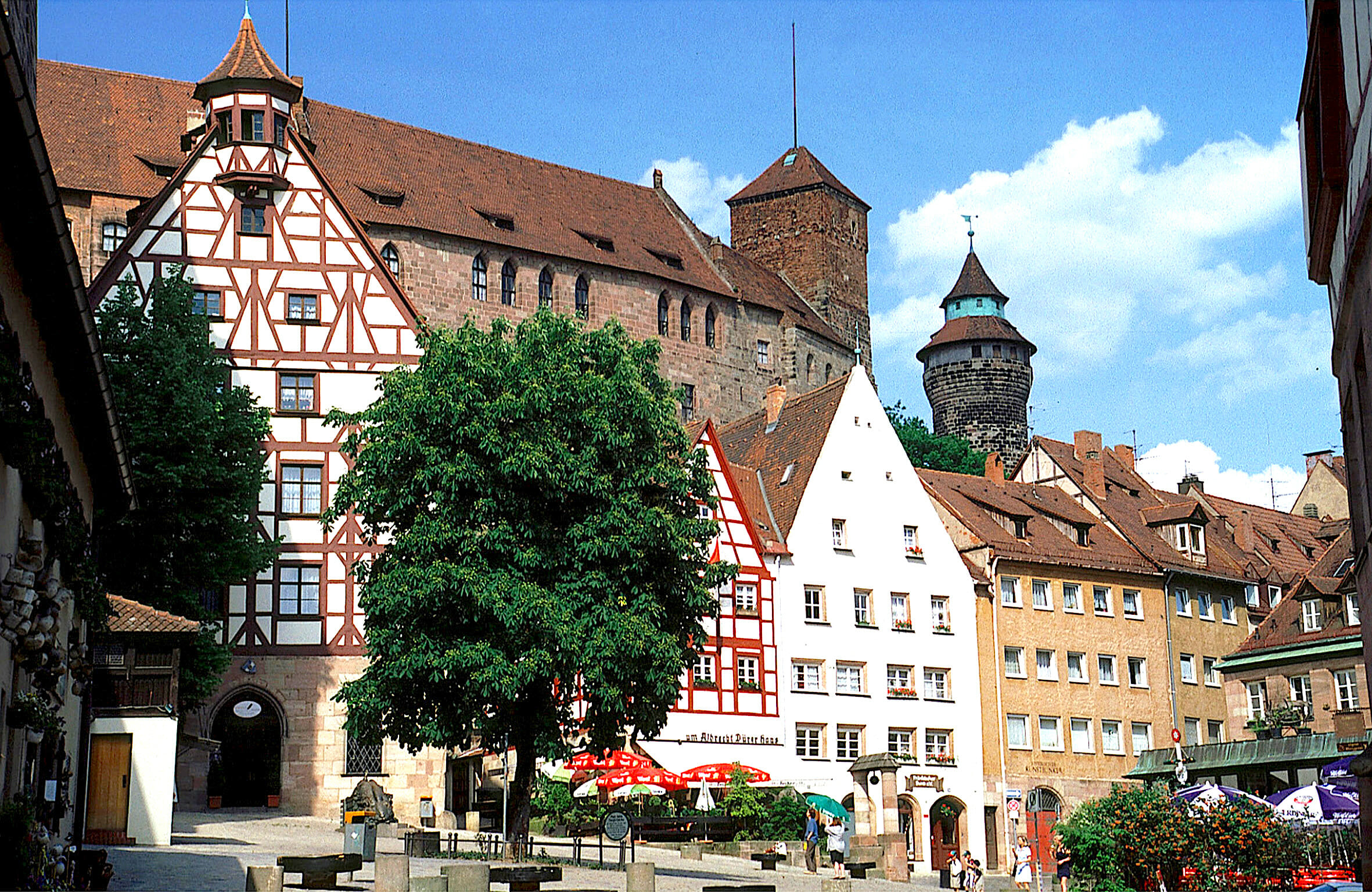
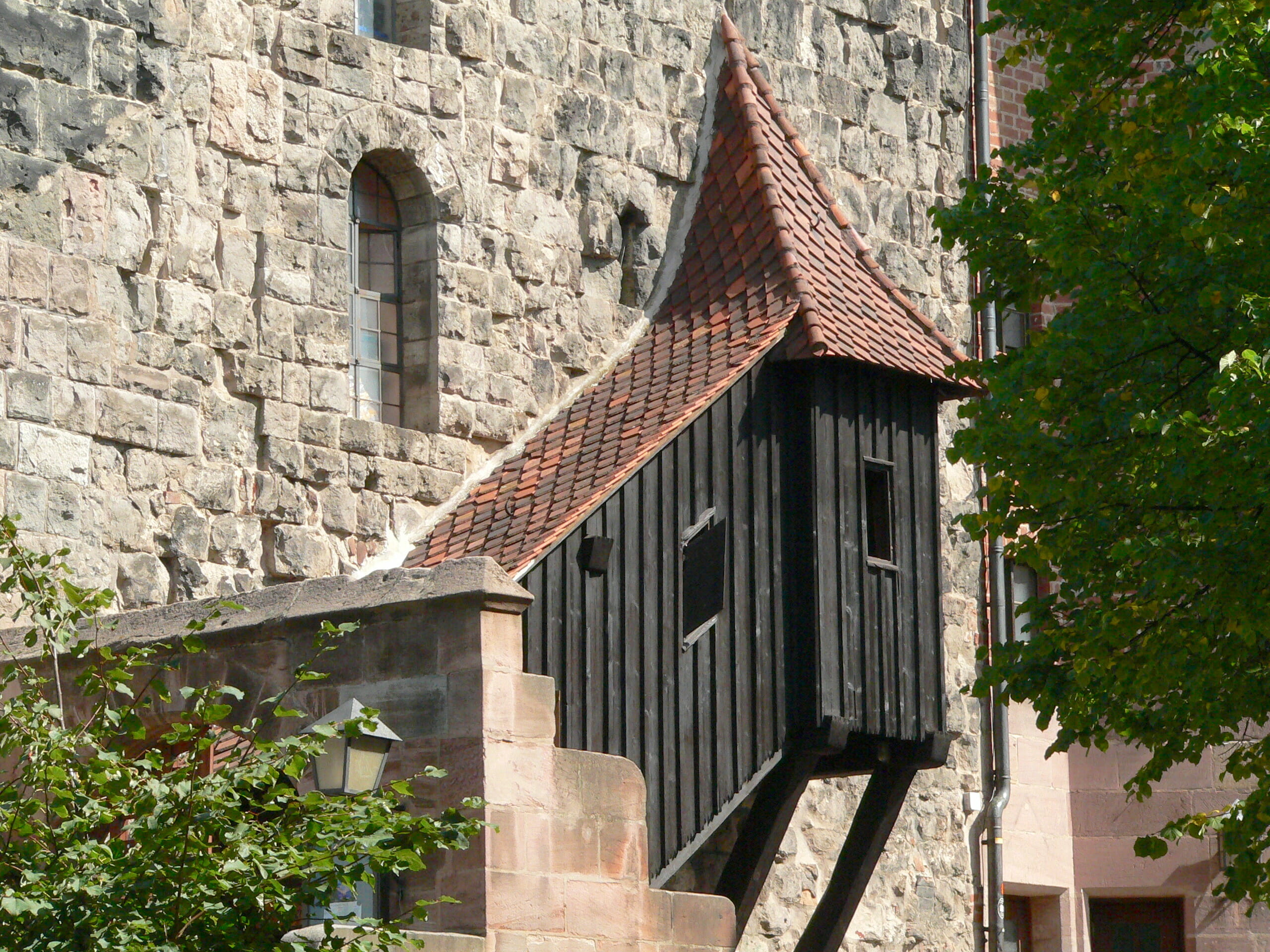
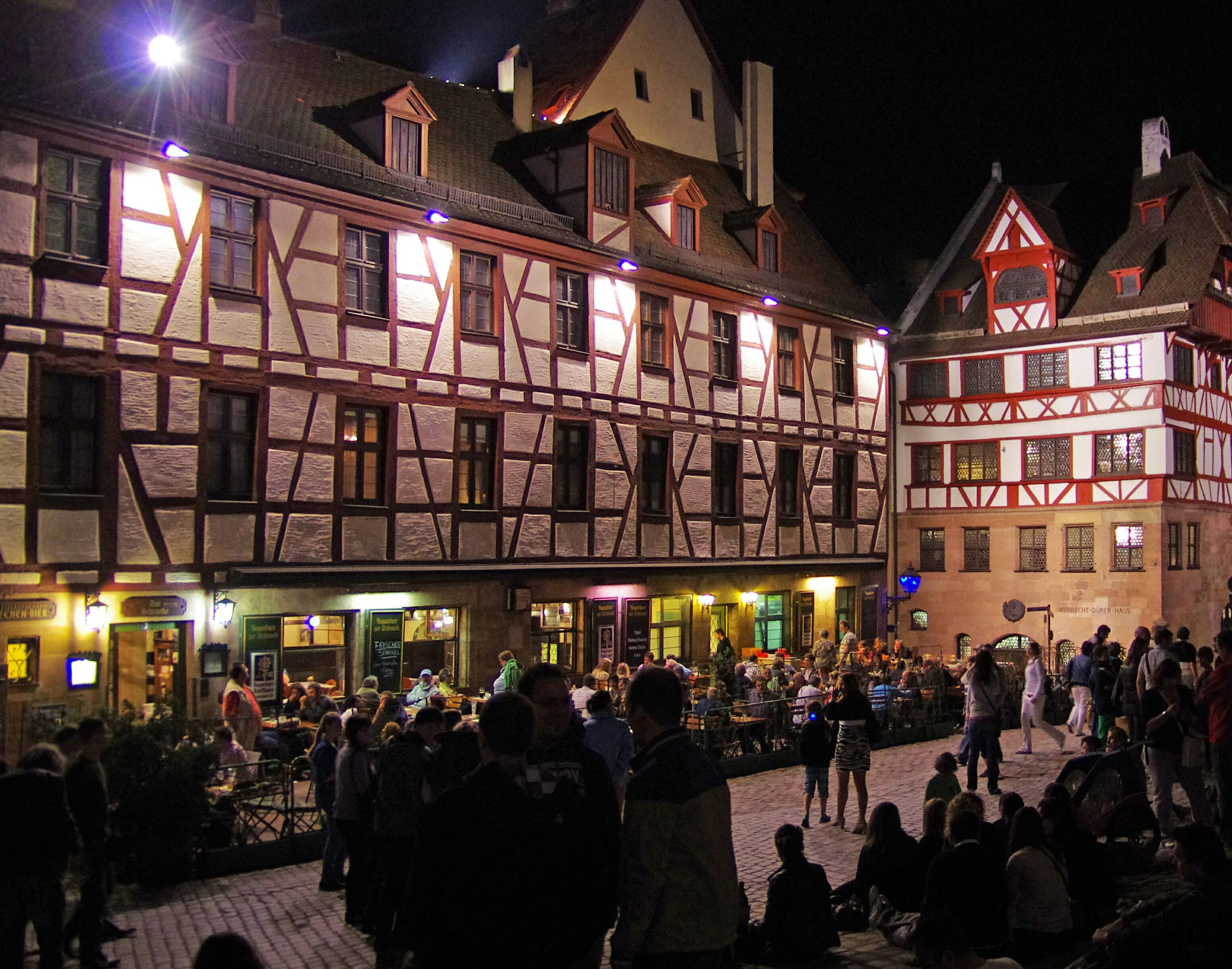
NUREMBERG AT NIGHT
To spend an evening out you are spoiled for choice. With opera, drama, ballet or concerts, the Staatstheater Nürnberg offers a stage for everyone. In addition, numerous free theaters enrich the theater life of the city and shape the musical life of the Staatsphilharmonie Nürnberg and the Nürnberger Symphoniker.
If you prefer a cocktail or a beer, dance through the night or listen to music, you have all possibilities from the classic cocktail bars over rustic pubs, cool beer gardens to clubs presenting live concerts. Many good bands perform on the stages and international DJs are on the turntables.
NUREMBERG DAY 2
LIVING LIKE A PATRICIAN
If you feel like getting a historic feeling of how large merchant families used to live, where they made business and celebrated, this is a perfect choice; the representative Renaissance castle of the family Tucher is a summer residence from the 16th Century equipped with original pieces of art and furniture. You will find canvasses by Dürer’s teacher Wolgemut or by Lenbach, precious tapestry and casted dishes specially made for the Tucher family in Limoges. In the remodeled garden one of the most beautiful inside rooms of the Renaissance times has been restored. Tip: Sundays at 2 pm, the former Lady of the House Katharina Tucher personally takes you on a guided tour through the castle and talks about the life of a patrician family.

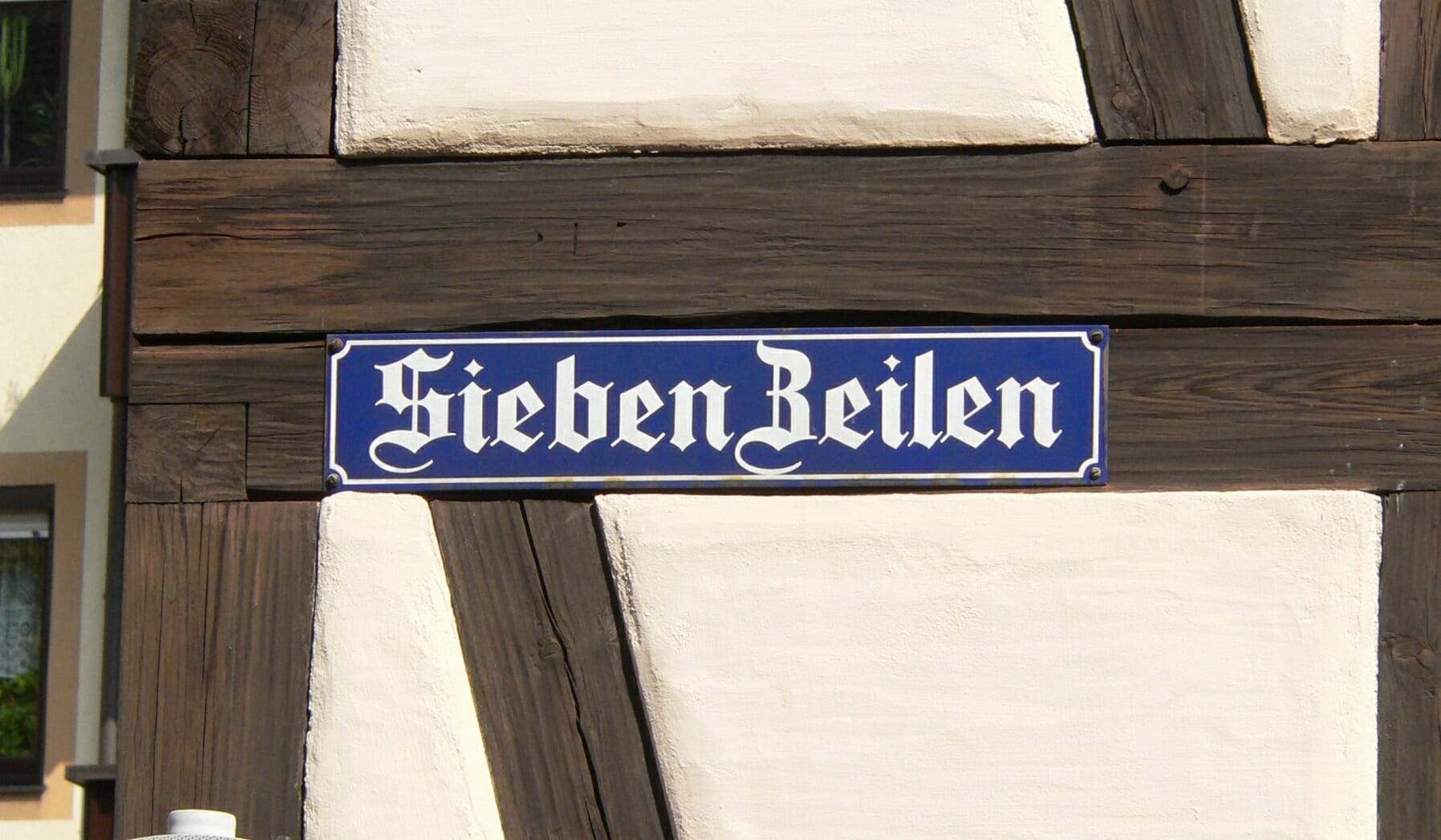
THE ESTATE SEVEN LINES
Although there were no Green cards in the 15th Century, the recruitment of urgently needed crafts persons was promoted heavily. Therefore, in 1488, the city board abated the Buergergeld (one-time tax want-to-be-citizens had to pay to the city) for Swabian weavers and even built accommodation for their families. These seven lines with three houses each built together are all restored nowadays, and can be considered an archetype for future laboring colonies.
ST. LAWRENCE’S CHURCH
A Gothic basilica with high double towers along with a western facade decorated in rosettes is the focus of the St. Lawrence Old Town. The main portal, with all its gures and scenes from the life of Jesus, is fascinating enough, but the abundance of treasures on the inside is really incredible. One of the most important pieces of the exhibition is the Engelsgruss (Annunciation) by Veit Stoss. It can be found in the middle of the choir loft which was created by the order of Anton II Tucher, right before the city’s commitment to the reformation (1517/18). The carved work depicts Annunciation Day with Archangel Gabriel and the Virgin Mary surrounded by the 55 blossoms of the rosary.
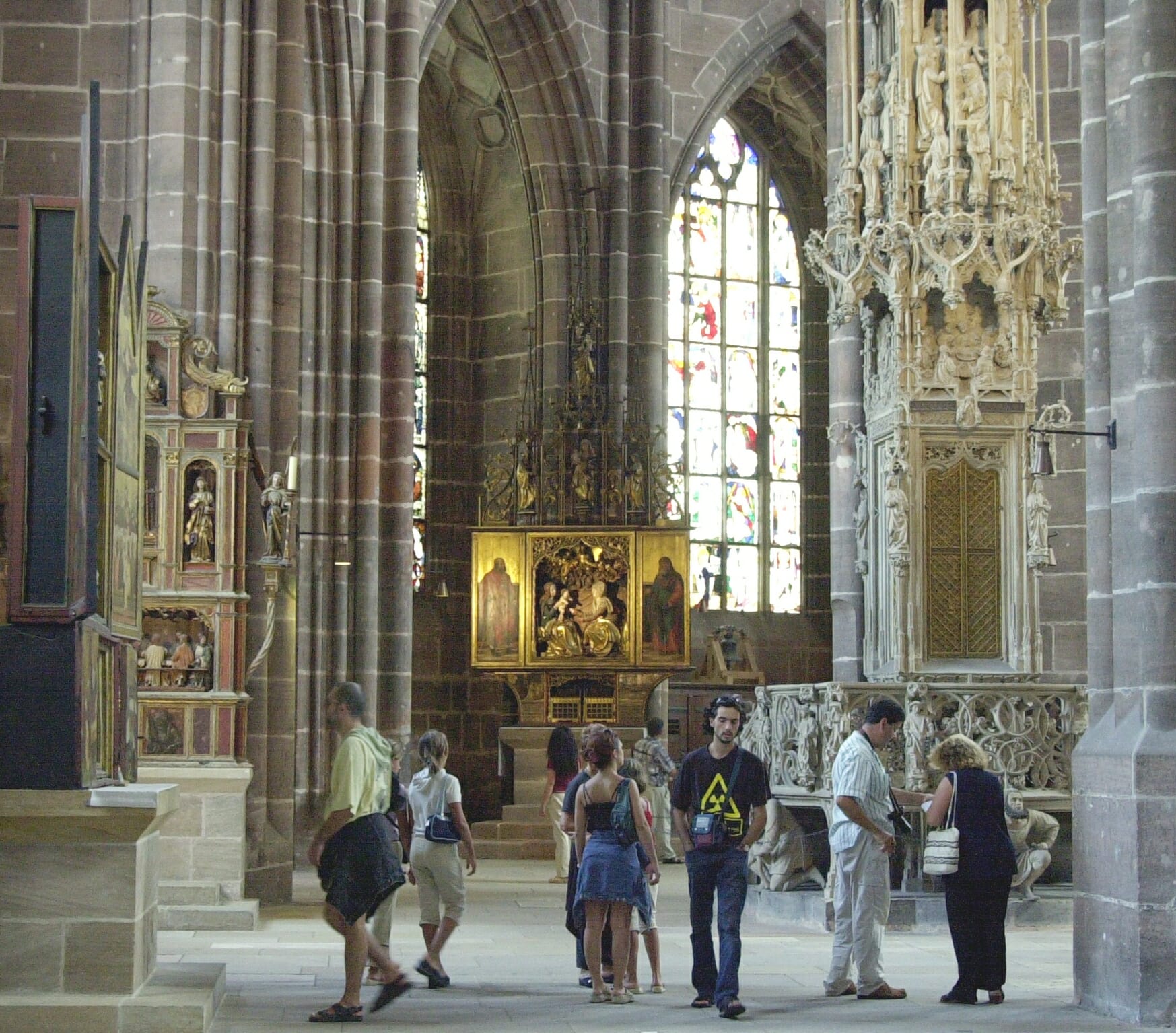
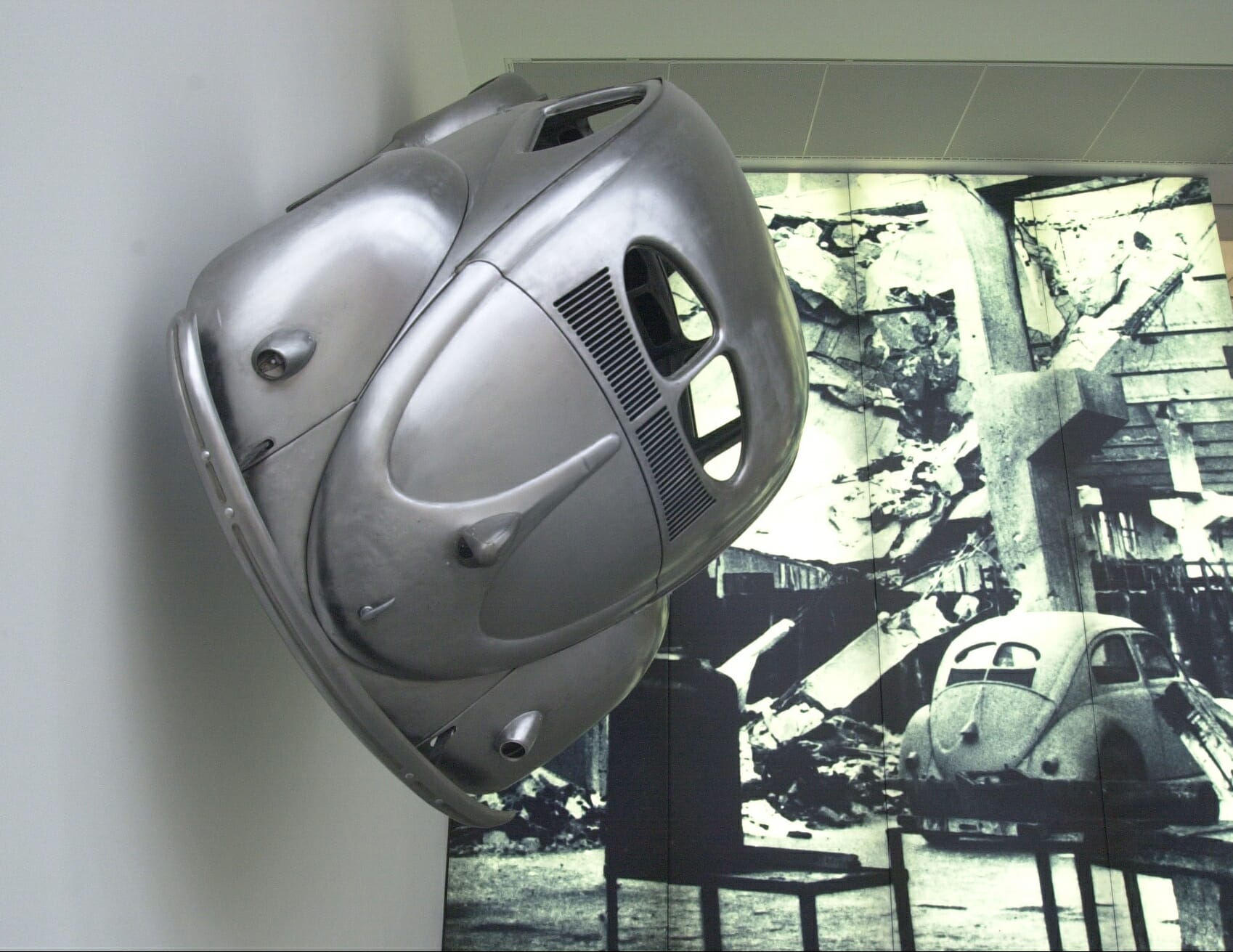
TO VISIT THE FINE ARTS
The New Museum: Walking down Königsstraße, the tiny alley appears out of nowhere and surprises visitors with an amazing perspective; at a length of 100 meters, a curved glass-facade mirrors the surrounding medieval buildings. By sensitively blending his new building into the medieval structure of the city, the architect Volker Staab successfully achieved an architectural master- piece. The completely transparent wall allows you to see parts of the exhibition rooms, as well as the stair case with its spiral-shape reminding of the Guggenheim-Museum in New York. Another stunning characteristic is the balanced presentation of art and design to be found inside.
PAY A VISIT TO THE CRAFTSMAN
Beside the Dicker Turm (Thick Tower), you should drop by the Handwerkerhof (Crafts Yard) where you can learn everything about traditional art of crafting of earlier centuries. At close quarters, craftspeople of different guilds offer their products and display them in timber framed houses. You will see glass being sanded and pottery being modeled, watch leather or tin processing and a lead-caster at work. And of course you will also find a typical Nuremberg snack there.

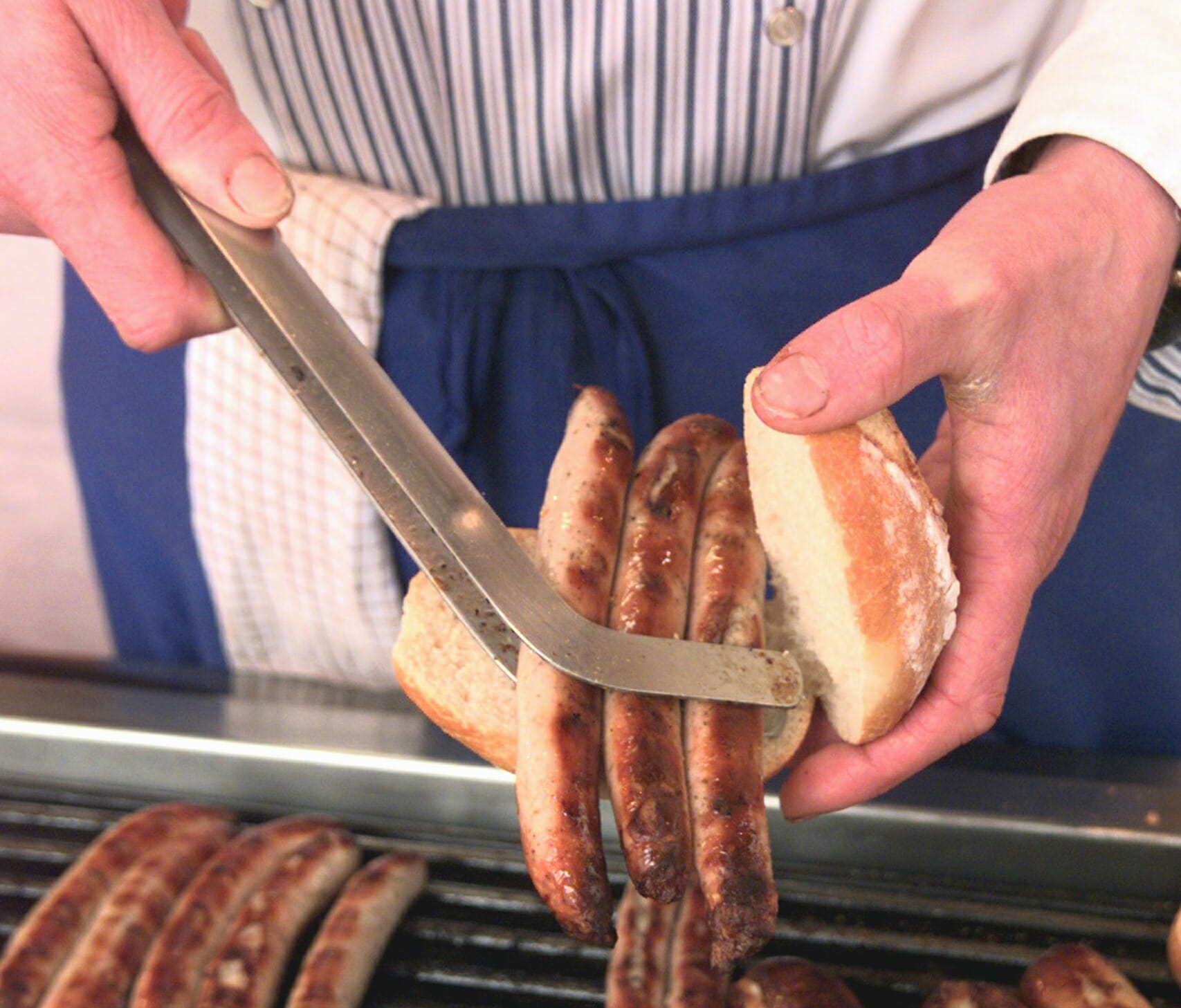
HAVE A SNACK: “3 IM WEGGLA”
Leaving Nuremberg without having tried its famous sausages would be a sin. The quality of the 8 centimeter long, 20–25 gram sausage, grilled over amed beech–wood ambers is always up to the highest standards thanks to a decree which dates back to the Middle Ages. Goethe already found them so delicious that he had them sent by post from Nuremberg to Weimar. The author Jean Paul compared them to a “Forgetmi- nenot” for his belly. But take caution; never order 4, 5 or 7, but always 3, 6, 8 or even 10 (the traditional numbers). Three pieces will be laid into a bun called a ‘Weggla’. All higher numbers are served with Sauerkraut and dark farmers’ bread or with potato salad.
SHOPPING IN NUREMBERG
The pedestrian zone caters to almost every wish ranging from fashion and lifestyle to antiques and tin cures. Kaiserstraße is Nuremberg’s most exclusive street where shops like Elegance, Cartier, Hermes, Louis Vuitton oder René Lezard have settled.
When you are done shopping, cross Karlsbrücke to visit Trödelmarkt (Flea Market). Although this square on a little island in the Pegnitz River used to be true to its namesake in earlier days, it is now a fancy shopping area where original stores offer a diverse choice of trendy clothes, individual toys, wine and exclusive presents.

NUREMBERG DAY 3
SCENERY OF TERROR
SCENERY OF TERROR
Thousands of lives and massive destruction were the costs Nuremberg had to pay for the megalomania of Nazi Germany. The regime held its yearly propaganda parade here from 1933 to 1938, and made the “City of Parliaments” a “City of the Party Rallies”. The Nazis had chosen the “Treasure Chest of the German Empire” on purpose to impose a supposed traditional link between this former imperial town of the Holy Roman Empire of the German Nation and the Third Reich.
The Nazis’ architectural megalomania still shows on the former Party Rally Grounds. Spanning eleven square kilometers, they intended to create a monumental scene for the egocentric cult of the NSDAP. Only the Zeppelin Field, with its main tribune based on the Pergamon Altar, was nished.

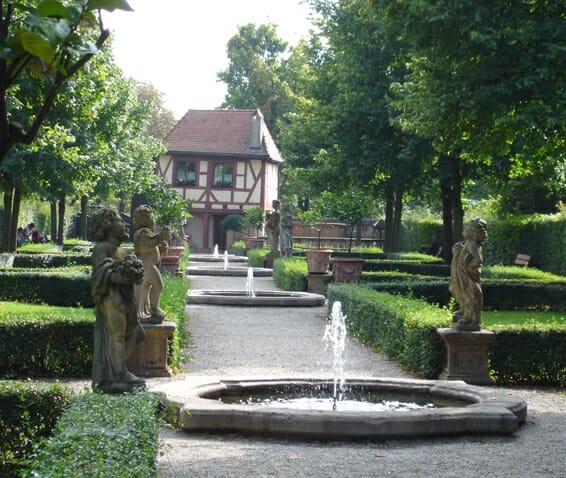
THE QUARTER ST. JOHANNIS
The next stop lies within one of the oldest suburbs and was first referenced in 1234, in context with the ‘Siechenkobel’ (a ward for the leprous outside of the city). It was only after the Thirty Year War that St. John became a regular living area as Patricians and wealthy citizens started building magnificent houses there.
Due to its old buildings and the idyllic location on the river Pegnitz, St. John is one of the most popular quarters today and is home to many pubs and restaurants. St. John’s Quarter is most famous for its graveyard. The cemetery of St. John holds a great signi cance in Europe’s cultural history. It was founded in 1518 and many city celebrities have been buried here like Albrecht Dürer and Veit Stoss.
HISTORY OF A NATION
You should schedule several days if you plan on visiting the entire museum, with its 17 departments and more than 25,000 exhibits (1.2 million in the complete collection). If you have less time, you can still explore an outrages exhibition even if you see only a fraction of the 25,000 square meters.
Your expedition may span items from the Stone Age to Joseph Beuys. Take your pick between famous works such as the decorated Ezelsdorfer Goldkegel from the 10th Century B.C., the oldest existing display of the earth, or the globe by Martin Behaim (1491-1493). Other spectacular options are the self portrait the Drinker by Kirchner (1914), The Arch Angel Raphael and the Young Tobias by Stoss (1516) or Messerschmidt’s Character Heads from 1770.
The museum’s external architecture depicts a conglomerate of different architectural styles and is as worth seeing as the interior. The core of the building consists of a late medieval Carthusian monastery along with church, cross aisles and monk accommodation and was extended several times. An architectural highlight is the light-flooded reception hall (1993) in Kartäusergasse.

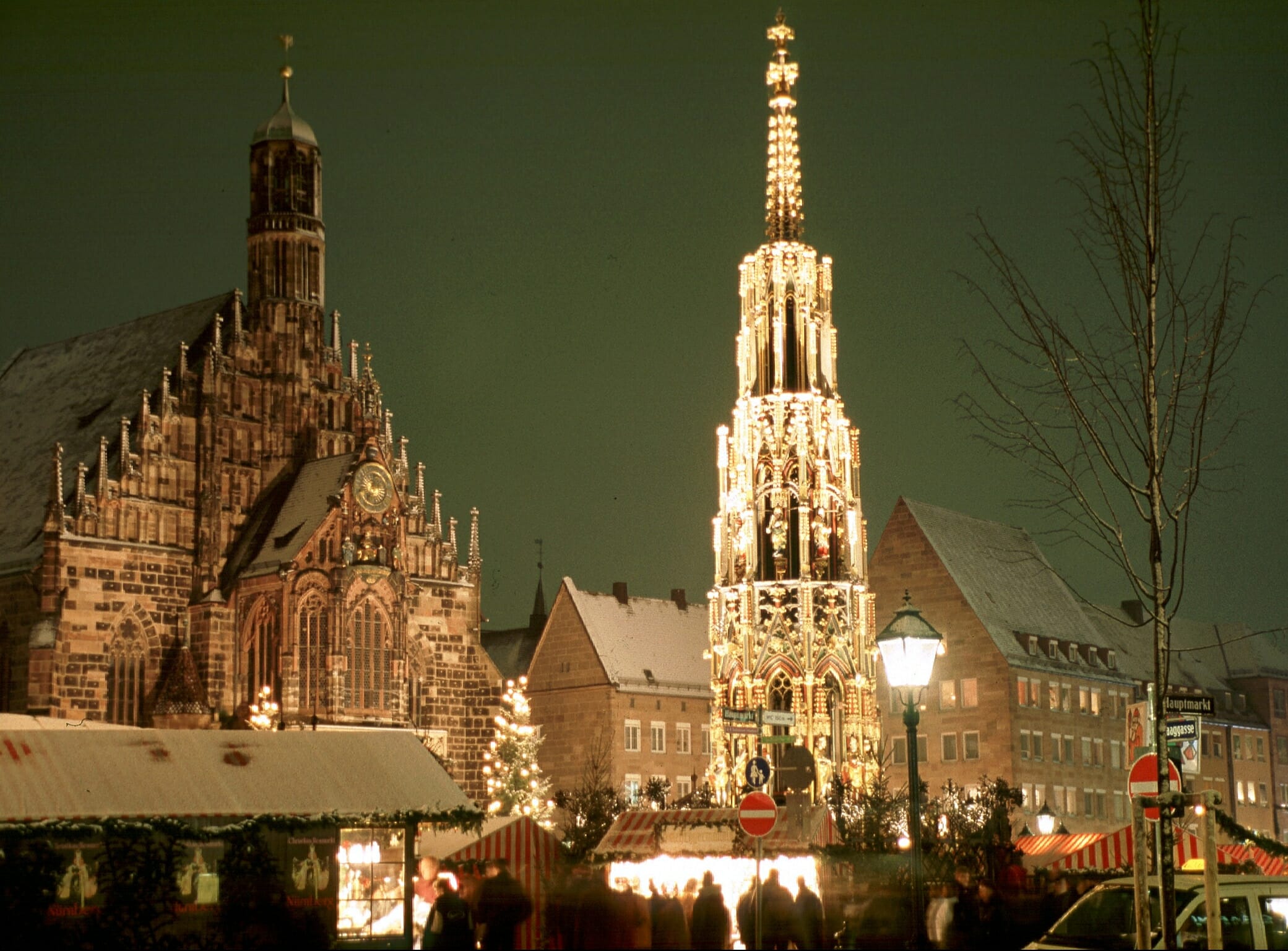
THE CHRISTKINDLESMARKT
THE CHRISTKINDLESMARKT
Christkindlesmarkt (Christmas Market): Thousands of eyes turn to the gallery of the Frauenkirche (Our Lady’s Church) at half past five on every Friday before the First Advent. The Christmas Angel opens the famous Christmas Market with a festive prologue.
More than two million people will come to the “town made of wood and cloth” before Christmas Eve to enjoy gluewine (spiced, hot wine) and sausages, eat original Nuremberg Ginger bread, fruit-bread, and buy a tinsel angel or a famous Zwetschgermoh (the lucky chimney sweeper made from plums, dates and a walnuts).
TO TRAVEL TO NUREMBERG BY CAR, TRAIN OR PLANE
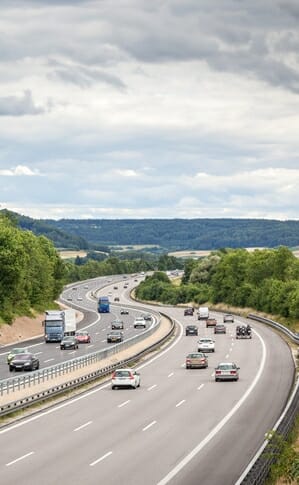
You can reach Nuremberg easily by car. It is a ride of two hours sharp from Munich via highway A9; from Frankfurt via highway A3 it would be two and a half hours.
Many airlines fly directly to Nuremberg. The distance to Nuremberg Main Station is approximately 5 kilometres. It takes about 30 minutes to reach the city by S-Bahn.
Find your plane to Nuremberg here:
Nuremberg is very well connected to the German railway system an you can reach the town easily by ICE. Nuremberg Main Station is located close beside the city centre and therefore a good point to start your first walking around the city.
A clever way to travel not only for young people ist the long-distance coach (Fernreisebus):
